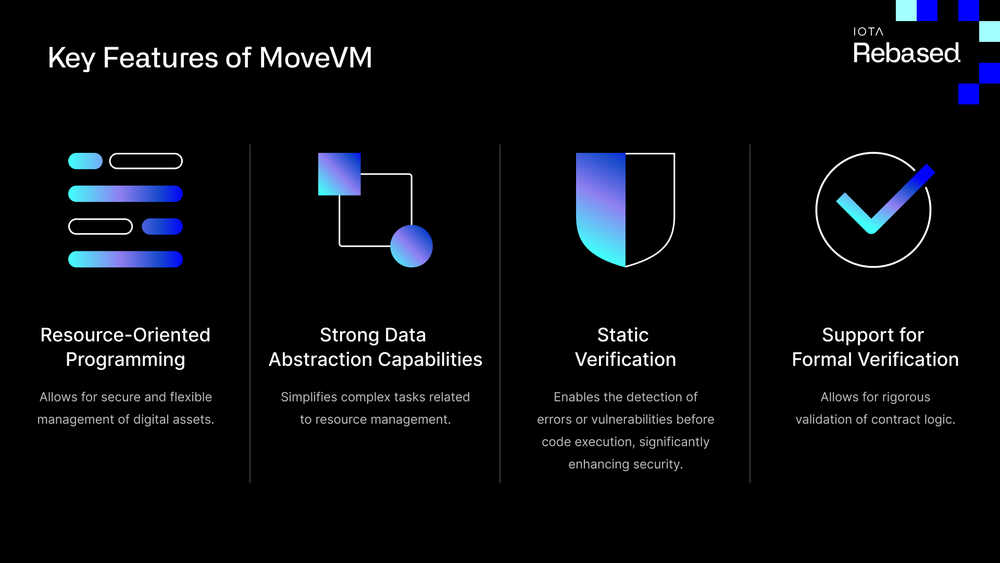Imagine a blockchain that’s like a cat trying to be a dog – promising to be something radically different since 2015, only to spend years tethered by a very bossy Coordinator acting like the network’s grouchy bouncer. Now, behold: IOTA’s Rebased upgrade, striding in on May 5 like a wizard waving a wand and declaring, “Decentralization, thy name is IOTA! Also, smart contracts! And fewer excuses!”
It’s not just an upgrade, it’s a digital renaissance, swapping out legacy bits for shiny decentralization bits and chucking out the Coordinator like last season’s socks. IOTA started life proudly proclaiming itself a “blockchain without blocks” – think of it as a blockchain who refuses to wear a suit, instead choosing the Tangle, a tangle-y graph thingy that processes transactions in parallel, which sounds like the blockchain equivalent of doing eight things at once without losing your snark.
Except that central Coordinator node – the project’s “decider-in-chief” – was always secretly running the show behind the scenes. The promise of a fully decentralized, feeless, scalable utopia remained tantalizingly out of reach, like a distant buffet of ideas, forever delayed by skeptical diners.
Now, with Rebased, the devs are tossing the stage manager out and hoping the cast can improvise without tripping over props.
So, What’s Cooking in IOTA’s Upgrade Cauldron?
Rebased swaps the old model for a delegated proof-of-stake system – basically, token holders elect validators, who then juggle security and consensus responsibilities with the grace of circus performers, but with fewer flaming torches (hopefully). No more Coordinator means transactions will finalize on their own merits, like a self-driving car that refuses to stop for the annoying human yelling at it.
But wait, there’s more! The real showstopper is native smart contracts powered by MoveVM – yes, that Move, the “Comeback-Kid” language from Meta’s Diem project, proving that what fails in Silicon Valley sometimes finds a second act on crypto stages.

Unlike Ethereum‘s sidechain encore performances, IOTA wants its smart contracts front and center, running right on layer-1. This places it squarely in the big leagues with movers like Aptos and Sui – blockchain cool kids wielding Move like a magic wand.
And get this: transactions will still be practically free. Validators can accept tips for speeding things up when the network is more crowded than a troll convention, keeping things fair while the gas price algorithms frantically play catch-up.
“The protocol would still allow for tipping validators for prioritization, ensuring transactions can be processed fairly when demand spikes faster than the protocol can adjust gas prices.”
IOTA
As for scalability, IOTA’s Mysticeti consensus algorithm sounds less like tech jargon and more like a gentle whale singing, but it promises over 50,000 transactions per second with finality quicker than you can say “blockchain is complicated.” The catch? Running a validator asks for some beefy hardware – you’ll need a 24-core CPU, heaps of RAM, and an internet connection that’s speedier than your morning coffee run.
Users, Firefly Wallet, and Other Drama
If you’re cozying up to IOTA, say your bittersweet goodbyes to the Firefly wallet—it’s being retired like an ancient wizard. Users must migrate to a new browser-based wallet with all the bells and whistles for this brave, new Rebased world.
Migration won’t be a “move along, nothing to see here” affair. You’ll have to back up your Firefly wallet’s wild stash of secrets with files, mnemonics, or whatever magical keys you have. And Ledger Nano S fans? Your device is officially so old, it’s getting unceremoniously dropped by Ledger Live. Time to upgrade or cry into your hardware wallet.
Besides new wallets, staking is joining the party. For the first time, IOTA holders can lock away their shiny tokens like dragon hoards, earning rewards and, more importantly, helping decide who gets to be the network’s new gatekeepers. Validators need a hefty 2 million IOTA stake to join the club, but fear not, delegators can pool together, so even plebs can participate by proxy.

Exchanges will hit the pause button on deposits and withdrawals during this upheaval, but trading is expected to sashay on like nothing happened.
For a project that’s sometimes been accused of promising the moon only to deliver a somewhat eccentric moon-shaped rock, Rebased isn’t just a fixer-upper. It’s the blockchain equivalent of trading in your old broomstick for a brand-new flying carpet — hopefully, without the squeaky hinges.
The stakes are sky-high (or perhaps Tangle-high), and if this upgrade hits its notes, IOTA might finally be the decentralized, scalable, general-purpose blockchain it always dreamed of — no longer the crypto equivalent of a clever idea that shows up late to the party. If it flops, well, the crypto world doesn’t much do pity parties anymore.
Read More
- Dormant Uniswap Whale Awakens: Is UNI Heading to $18?
- Gold Rate Forecast
- ETH Does What Now?! 😱
- Casper 2.0: The Blockchain Revolution You Didn’t Know You Needed
- Why Bitcoin Spot ETFs Just Became Everyone’s Favorite New Toy 🤑
- Bitcoin Soars to $83K: Trump’s Tariff Freeze Causes Crypto Chaos! 💰🚀
- Hold Your Hats: How Many XRP Tokens to Become a Millionaire Before 2025?
- Bitcoin’s Bumpy Ride: Will It Crash or Spark Off Again? 🚀💸
- EUR ZAR PREDICTION
- XRP’s Price Drama: Will It Break Free or Just Netflix & Chill? 🍿📉
2025-04-24 21:18